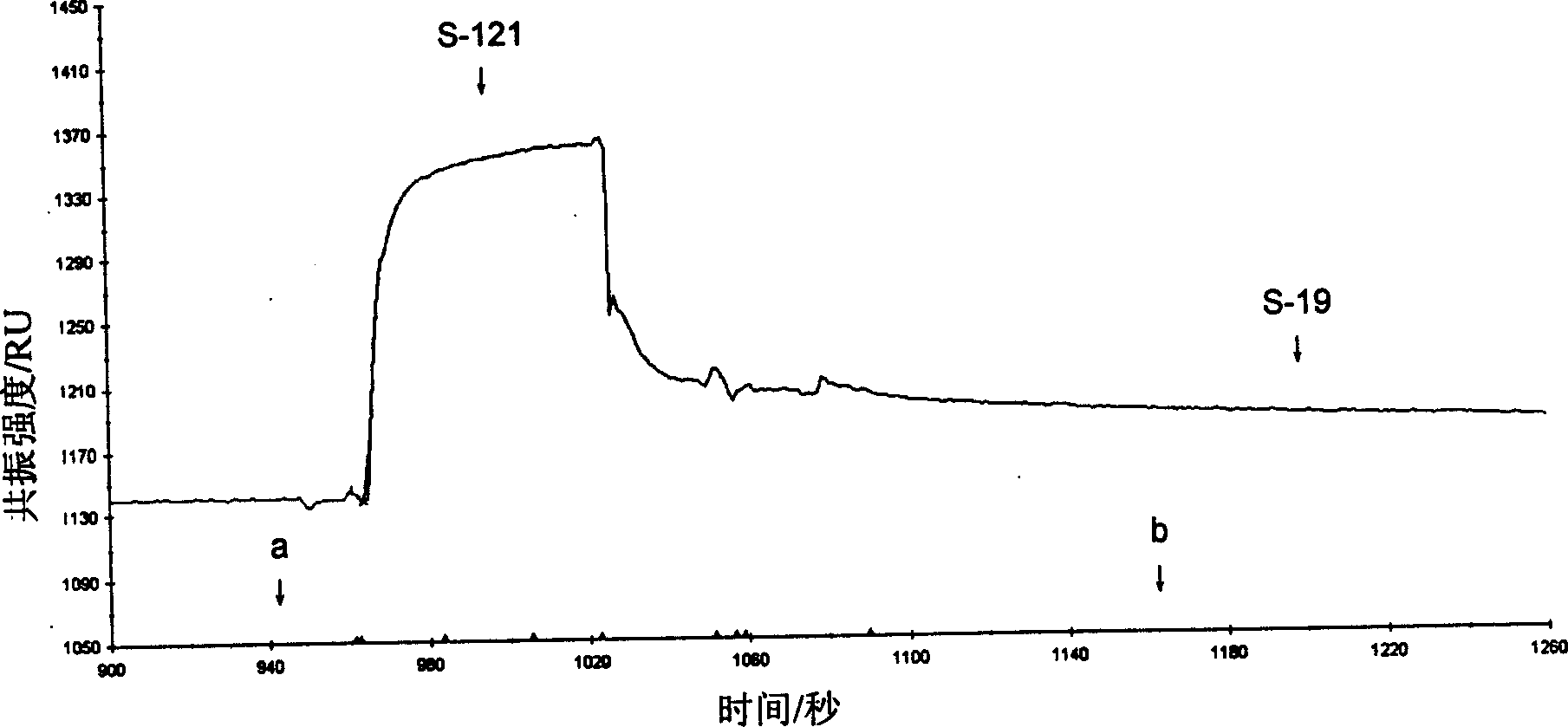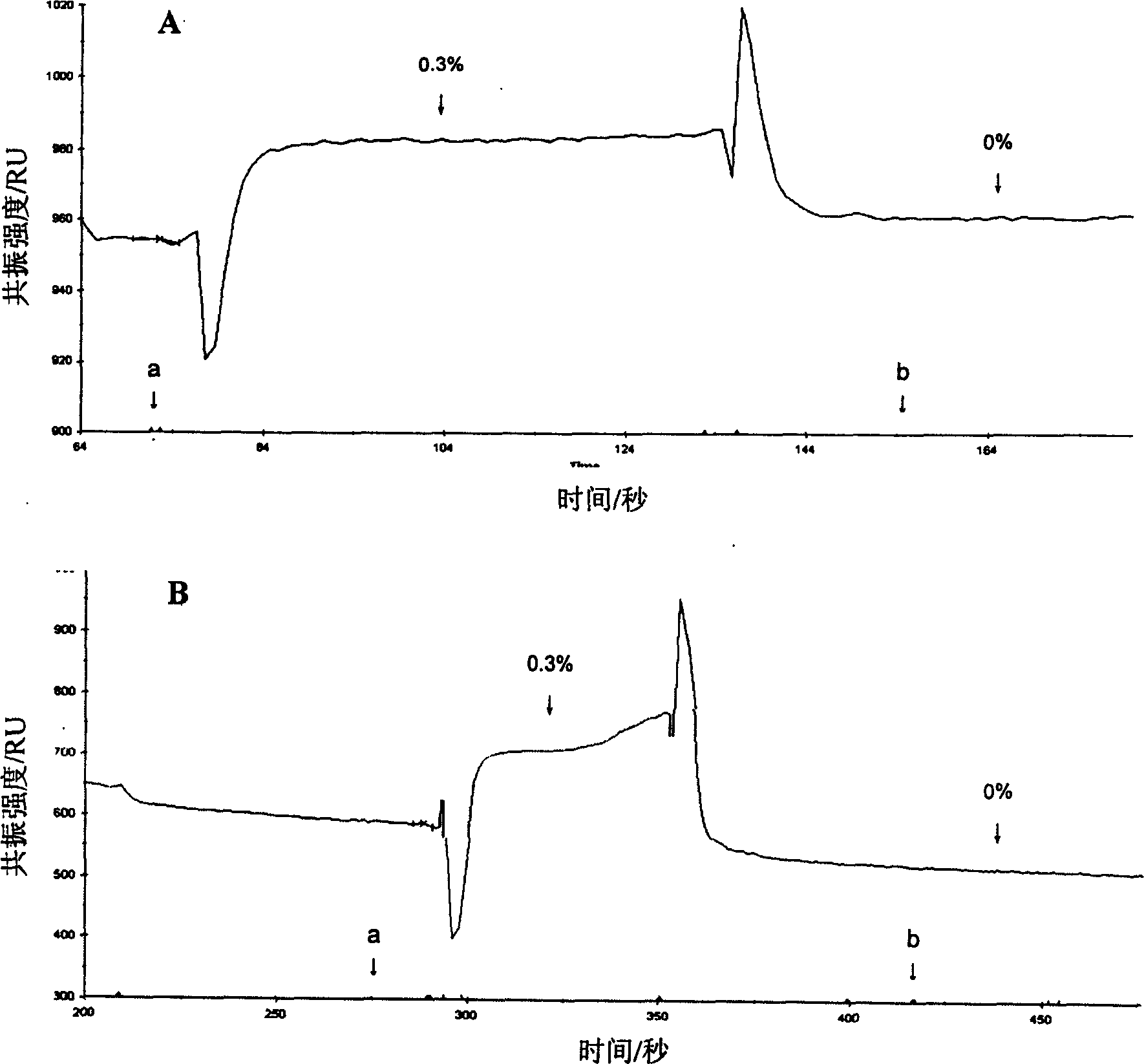Transgenic product surface plasma resonance biosensor detecting method
A surface plasmon and biosensor technology, applied in the field of detection of genetically modified products, can solve the problems of human and environmental hazards, lack of specificity and sensitivity, etc., and achieve the effects of continuous analysis, shortened detection time, and fast and accurate process.
- Summary
- Abstract
- Description
- Claims
- Application Information
AI Technical Summary
Problems solved by technology
Method used
Image
Examples
Embodiment 1
[0024] Selection of appropriate primers and probes is the key to successful DNA analysis and detection. For the most commonly used exogenous DNA in transgenic products, such as CaMV 35S promoter and Tnos terminator sequence, through repeated combination and adjustment of various parameters, through the software Primer Express TM Search and analyze with OLIGO 4.0, and compare each oligonucleotide, and select primers and probes that meet the requirements, see Tables 1 and 2 for details.
[0025] Primer number
target DNA
Primer sequence (5'-3')
35S-1 / 2
CaMV 35S promoter
GCT CCT ACA AAT GCC ATC A
GAT AGT GGG ATT GTG CGT CA
nos-1 / 2
Tnos terminator
GAA TCC TGT TGC CGG TCT TG
TTA TCC TAG TTT GCG CGC TA
[0026] Probe No.
target DNA
Probe sequence (5'-3')
35S-P1
CaMV 35S promoter
GAG GAG CAT CGT GGA AAA AGA AG
nos-P1
Tnos terminator
GCA TGA CGT TAT TT...
Embodiment 2
[0030] Design the terminal biotinylated specific probe 35S-P1 and immobilize it on the surface of the chip, add the CaMV 35S-PCR amplification products of plasmids pBI121(S-121) and pUC19(S-19) respectively, and monitor on-site by BIAcore X instrument The optical signal change process generated by the hybridization of the probe and the amplification product of the plasmid. The results show that the 35S-P1 probe can specifically hybridize with the amplification product of S-121 and produce an obvious hybridization curve, but has no obvious hybridization signal with the amplification product of S-19 (see figure 1 ).
[0031] SPR technology suggests that by detecting the complementary binding between DNA molecules, that is, detecting the hybridization reaction process between PCR products and probes, the specific detection of PCR products can be realized; online and real-time monitoring of the hybridization reaction process by instruments can realize Automated analysis of PCR pr...
PUM
 Login to View More
Login to View More Abstract
Description
Claims
Application Information
 Login to View More
Login to View More - R&D
- Intellectual Property
- Life Sciences
- Materials
- Tech Scout
- Unparalleled Data Quality
- Higher Quality Content
- 60% Fewer Hallucinations
Browse by: Latest US Patents, China's latest patents, Technical Efficacy Thesaurus, Application Domain, Technology Topic, Popular Technical Reports.
© 2025 PatSnap. All rights reserved.Legal|Privacy policy|Modern Slavery Act Transparency Statement|Sitemap|About US| Contact US: help@patsnap.com


